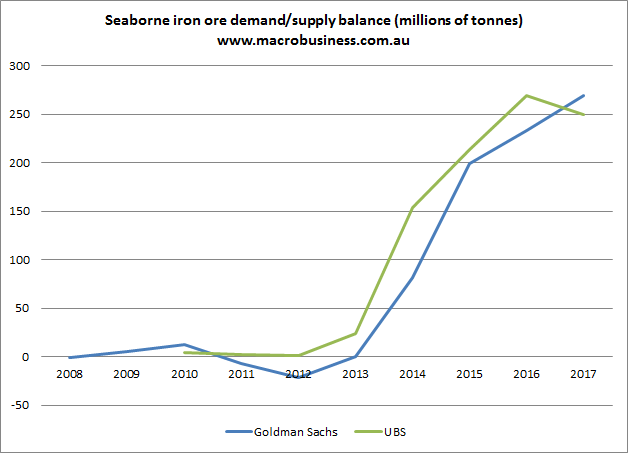Delusion appears to have seized iron ore markets. In recent days we’ve had Padbury Mining and its fantastic backer, Colin Barnett selling the same revival of Oakajee via Asian dough and now BHP is out selling the idea of more greenfields developments for the Pilbara. BHP Billiton iron ore president Jimmy Wilson at the official opening of its new Jimblebar mine reckons:
…greenfield mine developments are still possible in Western Australia this decade, even though the sector has crimped capital spending to shift focus on boosting production from existing assets.
…Jimblebar delivers 35 million tonnes per annum of ore but has capacity to generate 55 million tonnes.
…Premier Colin Barnett, who was on hand to officially open Jimblebar, said the mining industry would continue growing in WA but not at the stellar rates of the past decade.
With respect, RIO, BHP, Vale and Roy Hill alone have another 250 million tonnes per annum (mtpa) of future production already in train within two years. This output has sunk its costs into infrastructure and is coming come what may.
China can fend off rebalancing for a couple more years and then enter crisis or it can get to it now and manage the process. Either way, demand is going to slow and then slow some more. Given a reasonable base case of 3% per annum demand growth in steel then seaborne iron ore demand will grow by 40 mtpa in an already well-supplied market. Even accounting for a shakeout in Chinese production the gap between projected demand and already committed supply is gigantic:

The future is cost-out deflation and brown fields efficiency. This stuff is late cycle fantasy.

